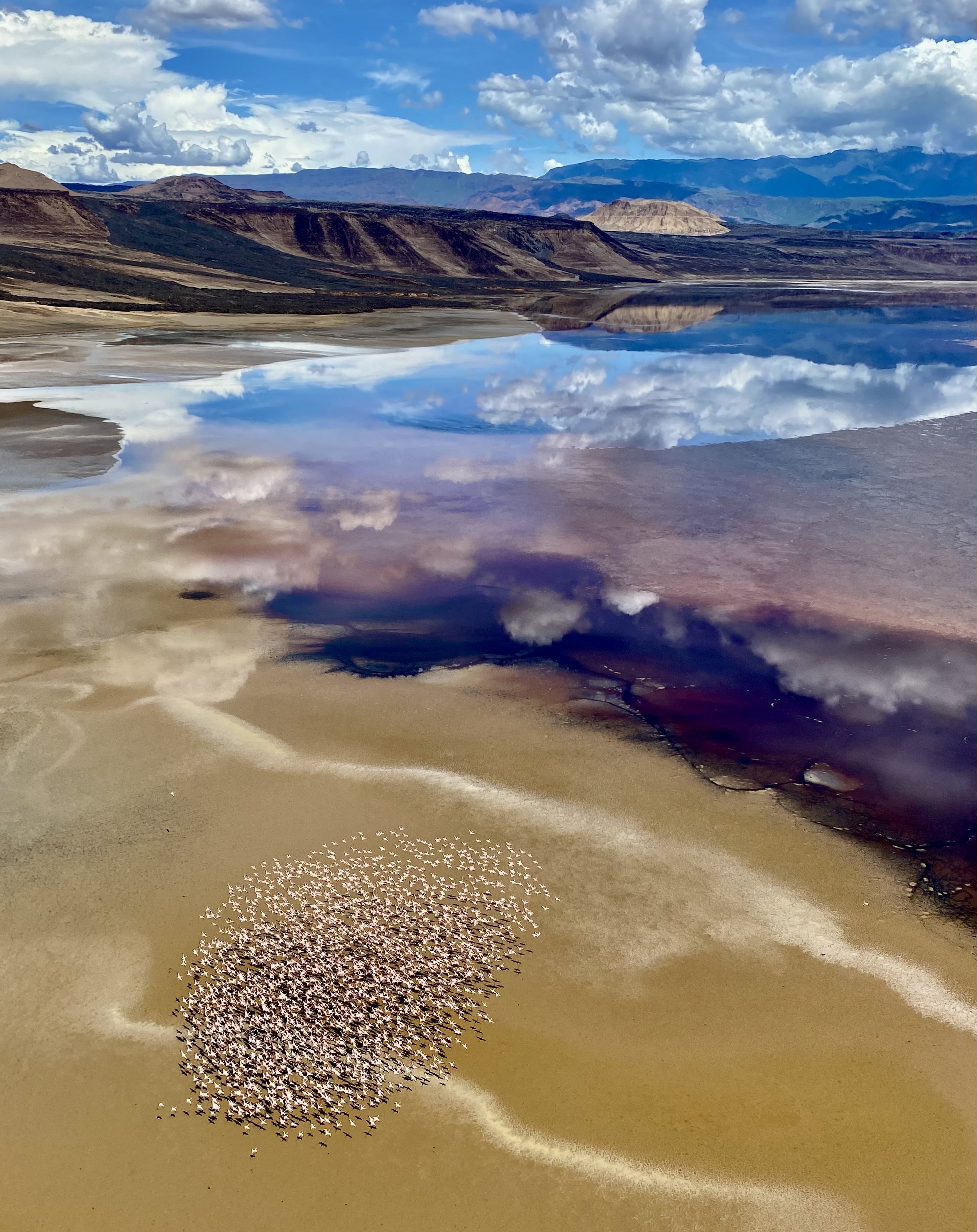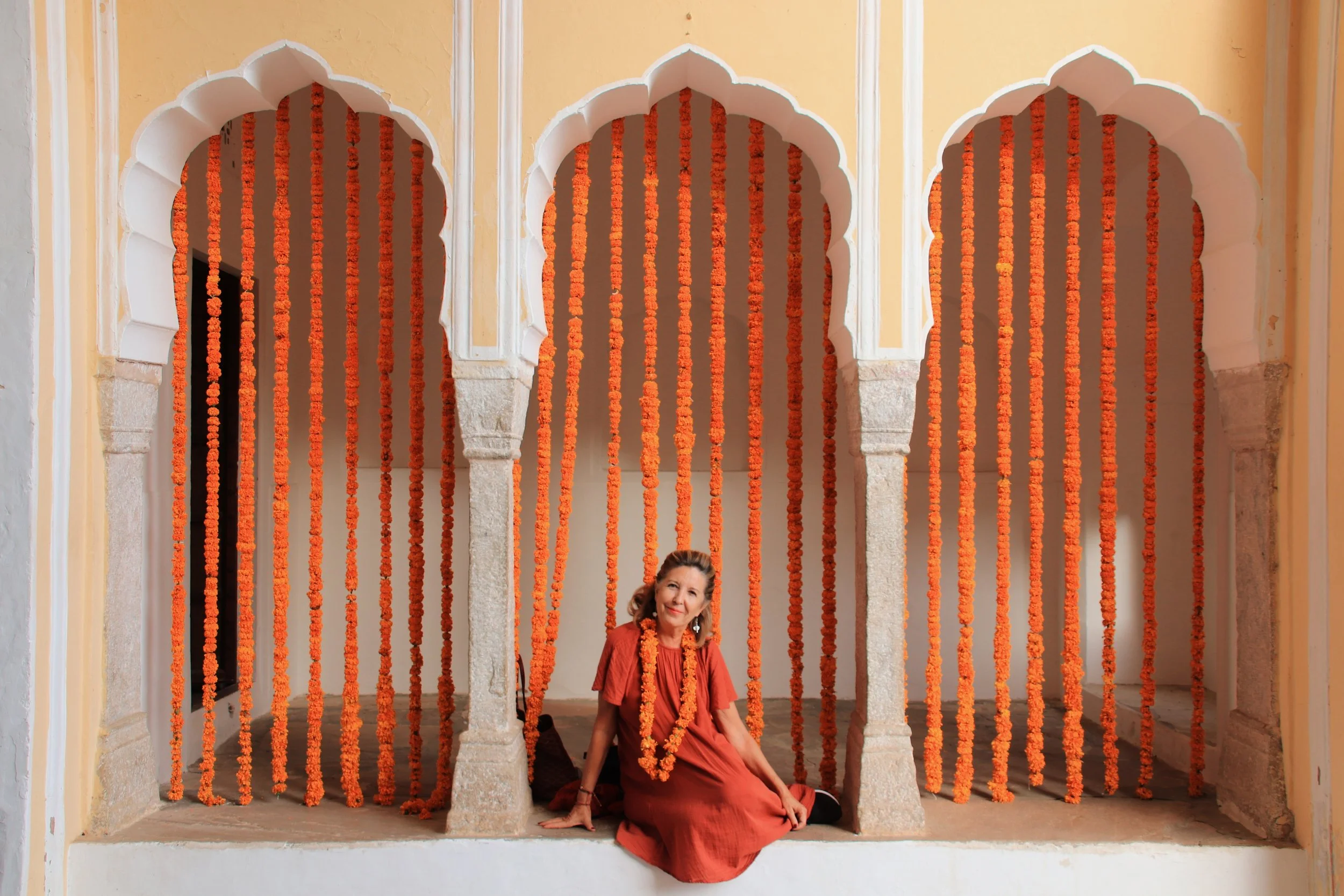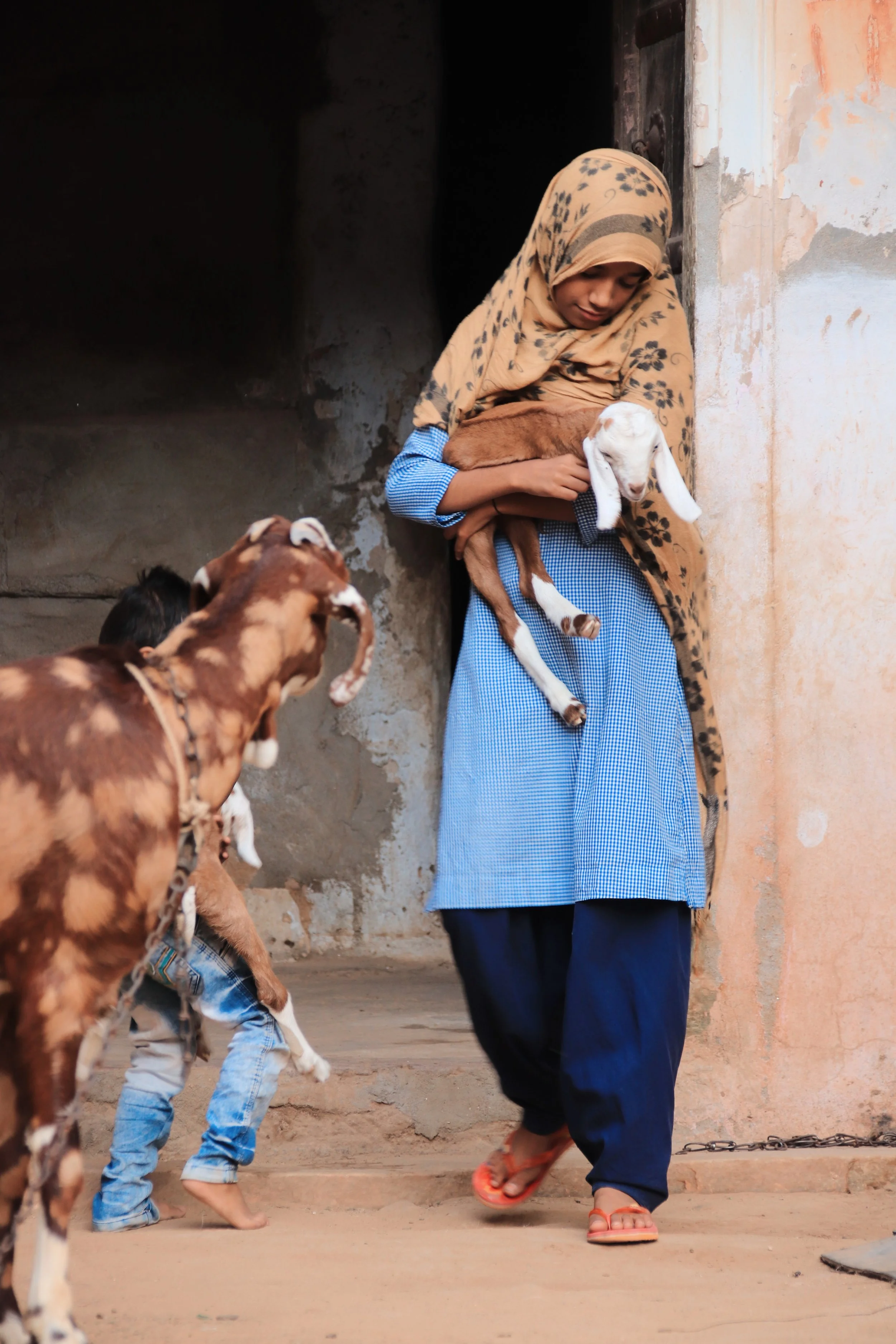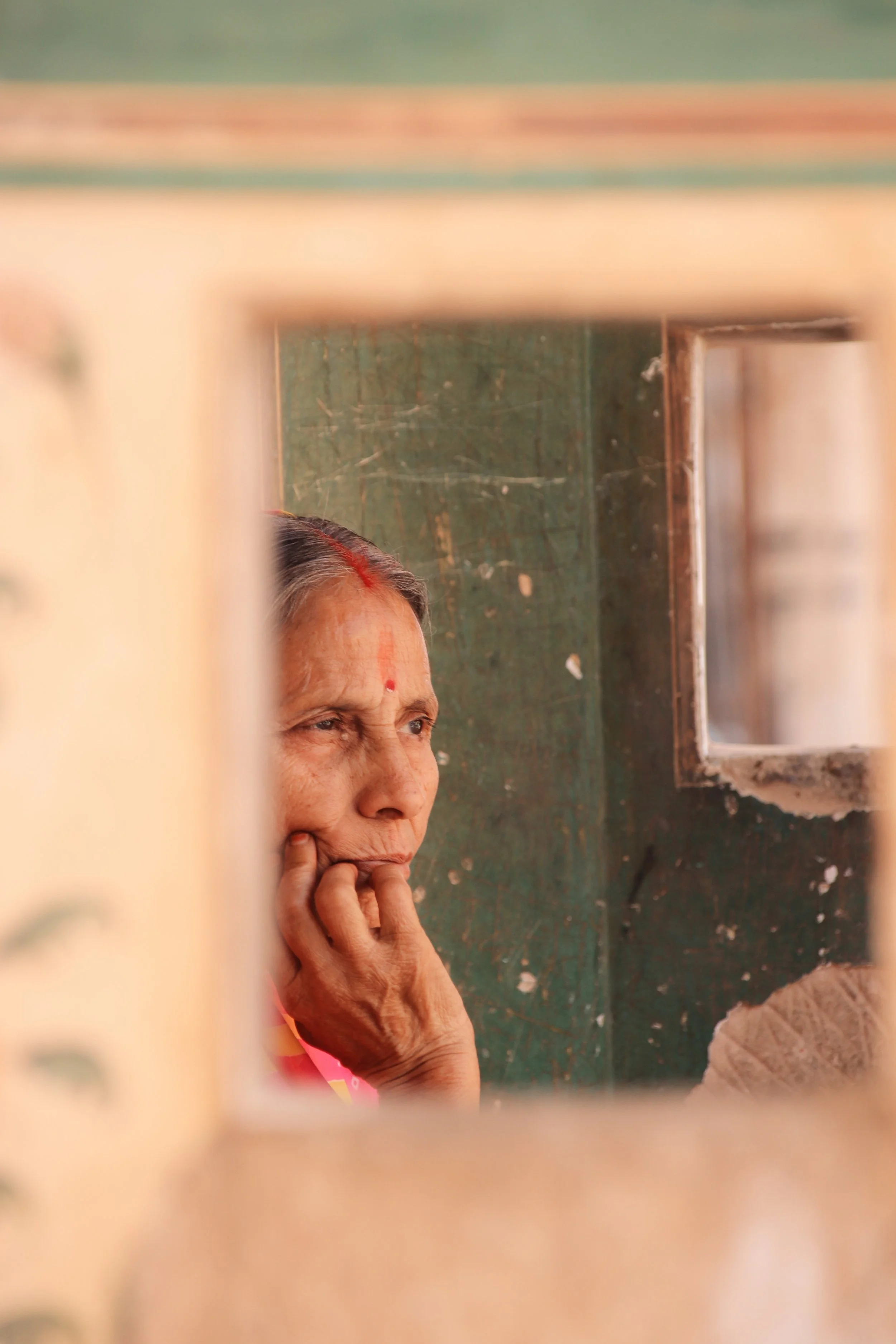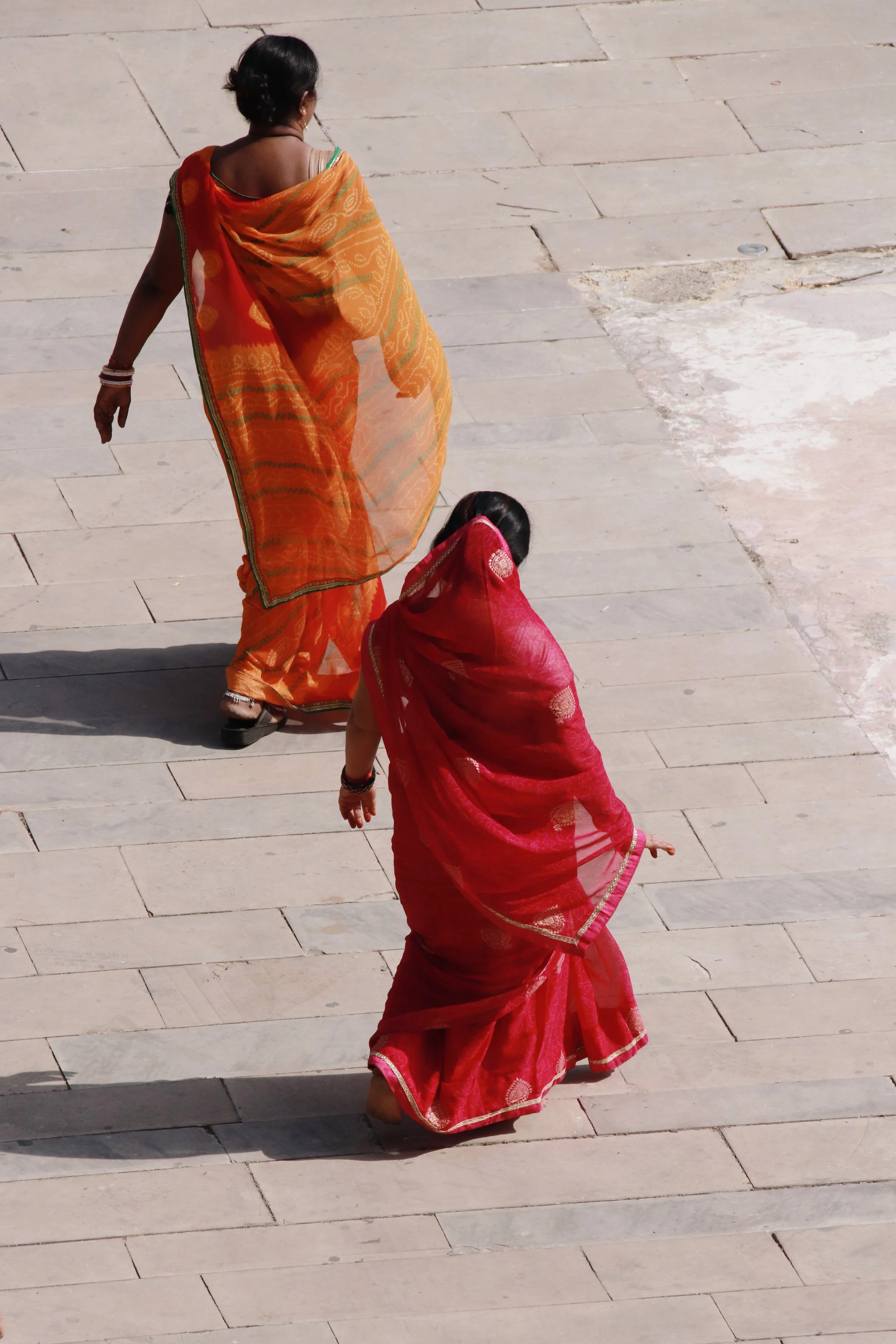OUR CLIENTS TESTIMONIES
ANA, who travelled TO Northern Kenya
text written by Ana:
“DON’T TAKE MY WORD FOR IT”
I could tell you about the whistling acacias. About their defense system built on ants. About flying above the flamingos, sketching shapes and shadows across a river of many colours. About the heart-melting loyalty of the dik-diks. About Naisimari.
I could assure you that for every animal we spot, many had already seen us. Just like the horizon—found, and finding us, everywhere. That the guineafowl’s cry is a warning, a gentle piece of wisdom to follow.
I could tell you what it felt like to sing and dance for hours among women in a Maasai village, wrapped in rhythm and joy. The honour of being invited by my dance partner to share tea with goat’s milk, boiled over the fire that lights her hut of earth and straw. While the children played with nothing, and the elder strung beads, we talked about life, about dreams, about joy, about the future. We agreed: Africa is Mother. I left her my scarf, which she turned into a dress.
I might dare say I felt a little like Karen, at home in Kenya. I came to understand the meaning of rain—and that water belongs to Mombasa.
But the truth is, words fall short of doing justice to what I felt on that journey. To what I still feel, two years on, when I close my eyes and return—senses standing to attention. That urgent need to go back.
Words can’t capture what was never meant to fit inside them. At least, not mine. So, don’t take my word for it.
Go. See. Feel. And carry it in your heart, unspoiled.
MARTA, WHO TRAVELLED IN INDIA
TEXT WRITTEN BY MARTA
“INDIA THROUGH MY EYES”
My relationship with India began in the 1980s, at a time when traveling still meant truly leaving home behind, stepping into the unknown. Since that first journey, India has never left me. I’ve returned many times, and each stay has deepened my fascination, my love, and my curiosity.
India does not easily let itself be known. It confronts you with striking contradictions: extreme wealth and poverty, chaos and serenity, ancient traditions and dizzying modernity. And yet, it was precisely within those contradictions that I found a deep and unexpected peace.
Delhi, with its endless energy, was my gateway. Agra moved me with the silent beauty of the Taj Mahal. Varanasi — so ancient, so sacred — shook me to the core. Witnessing life and death coexist so closely along the banks of the Ganges was an unforgettable experience.
Jaipur dazzled me with its colors and architecture, while Goa offered me a fairytale world, with the sun slowly fading into the sea. And then Kochi, with its tranquil backwaters and the traces of its history, whispered softly in my ear.
What draws me back to India again and again is not just its landscapes — though they are magnificent: deserts, jungles, mountains, beaches — but its people. Especially its women. Dignified, strong, elegant. Bound to tradition, yet often the silent protagonists of change. Dressed in vibrant saris, passing down rituals from generation to generation, with gazes that have known both joy and suffering — they have taught me more than any guidebook.
One thing that has marked me deeply throughout my travels is the subtle yet essential place women occupy in Indian society. Beyond the appearances of a patriarchal society — often perceived as rigid — I discovered powerful forms of feminine strength, sometimes silent, sometimes radiant.
In certain southern states, like Kerala, or in the northeast, especially in Meghalaya, I discovered matrilineal traditions, where descent passes through the mother’s line, where daughters inherit and safeguard both memory and future of the families. This model, as ancient as it is surprisingly modern, left a lasting impression on me.
But even where matriarchy is not institutionalized, I felt that feminine strength everywhere. In the markets, where women trade with confidence. In the homes, where they organize daily life. In the temples, where certain goddesses embody creation, destruction, wisdom, fertility. In India, the divine often has the face of a woman — and that says it all.
That contrast between the sometimes difficult social reality of women and their symbolic, spiritual, and essential role in the culture gave me much to reflect on. India taught me that power isn’t always shouted; sometimes it is simply embodied, naturally, in gestures, in voices, in silent transmission.
And then there is religion. Omnipresent. In a garland of flowers, in a song, in a statue at the base of a tree. Indian spirituality enters through the senses: the scent of incense, the tinkling of bells, the glow of a marigold floating in sacred water.
India didn’t just surprise me. It captivated me, deeply. Even today, after so many years, I don’t know if I can fully explain my attachment. But I do know this: I fell in love with India — not despite its complexity, but because of it.
And so my last trip to India was to celebrate my retirement and what would mark the beginning of my slow life. LovingJune Travels understood perfectly the crazy journey I wanted to make: starting in Jaipur, so that my friend Carmen, who was traveling with me, could discover it. And from there, a road trip heading south, stopping in wonderful palaces until we reached Ranthambore National Park to see the Bengal tigers, living in the wild. And we saw two!
POEM written by Ana:
“LET US BE THE RAIN”
Let us be the rain
that makes the river run
Let us be the rain
that darkens the impala’s coat
Let us be the rain
that makes men sing until dawn
Let us be the rain
that heals the wounded soil
Let us be the rain
that colors of green the horizon
Let us be the rain
that washes our friend’s tears
Let us be the rain
that makes the difference
Let us be the rain!



